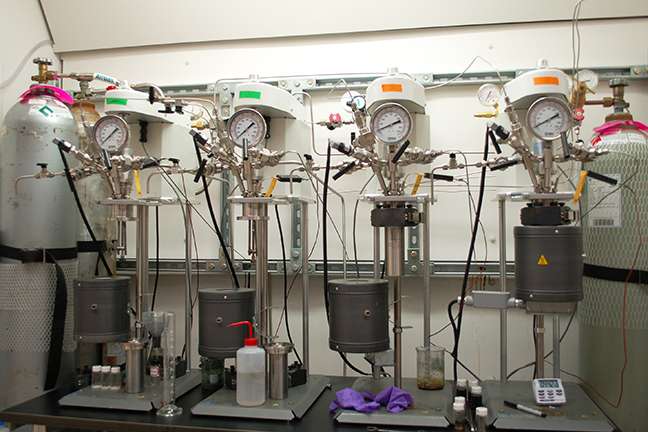科学家一直在研究一种绿色可持续的轮胎制备工艺,传统生产汽车轮胎需要的合成橡胶是石油副产品 异戊二烯(isoprene,橡胶基质),而明尼苏达大学的科研团队经过长期研究找到一种全新催化剂和制备方法,应用突破性的微生物发酵新工艺,能够从木制品和草等植物中催化炼制异戊二烯 ,大大提升该工艺的绿色环保程度。

(Credit: University of Minnesota)
新工艺从植物糖(如葡糖)的微生物发酵开始,转换为衣康酸(itaconic acid),与氢化合反应生成methyl-THF的化合物,加入最新发现的催化剂磺化聚苯撑(S-PPP,Phosphorous Self-Pillared Pentasil),可让methyl-THF化合物脱氢生成异戊二烯。这项新制备方法催化效率可高达90%,意味着生成产物中绝大部分均为异戊二烯,完全满足生产汽车轮胎,以及其它高级橡胶产品。
这项研究的主要作者,明尼苏达大学化学工程助理教授Paul Dauenhauer表示“全新催化剂磺化聚苯撑(S-PPP,Phosphorous Self-Pillared Pentasil)的表现令人惊喜,这种全新的固体酸催化剂极大地提高了催化效率,使得环保可再生地生产橡胶基质异戊二烯成为可能。”
以上中文内容转自CNBETA仅供参考学习
Gaofenzi.org小编补充参考文献:Omar A. Abdelrahman et al. Renewable Isoprene by Sequential Hydrogenation of Itaconic Acid and Dehydra-Decyclization of 3-Methyl-Tetrahydrofuran, ACS Catalysis (2017). DOI: 10.1021/acscatal.6b03335

Catalytic hydrogenation of itaconic acid (obtained from glucose fermentation) yields 3-methyl-tetrahydrofuran (3-MTHF), which then undergoes catalytic dehydra-decyclization to isoprene. It is demonstrated that a one-pot cascade reaction converts itaconic acid to 3-MTHF at ∼80% yield with Pd–Re/C catalyst and 1000 psig H2. Subsequent gas-phase catalytic ring opening and dehydration of 3-MTHF with phosphorus-containing zeolites including P-BEA, P-MFI, and P-SPP (self-pillared pentasil) exhibits 90% selectivity to dienes (70% isoprene, 20% pentadienes) at 20–25% conversion.